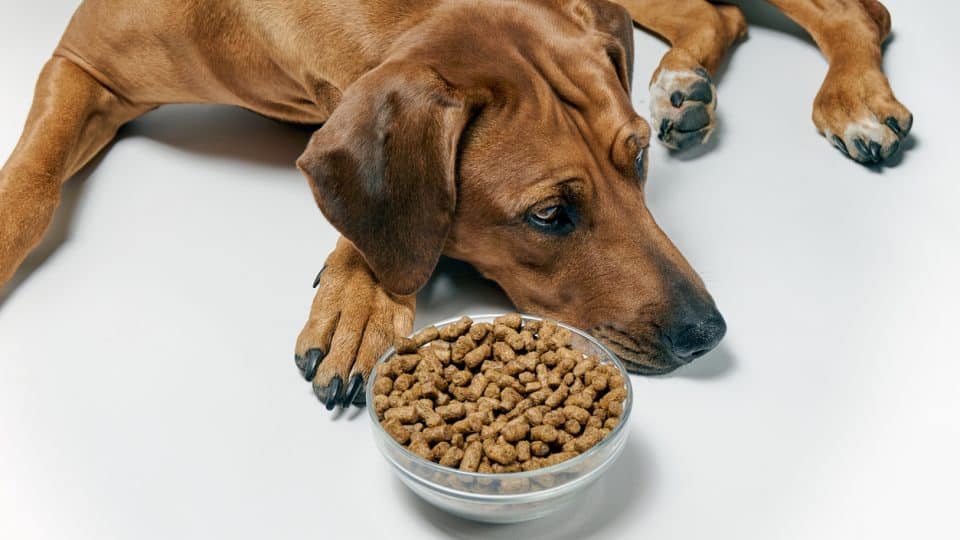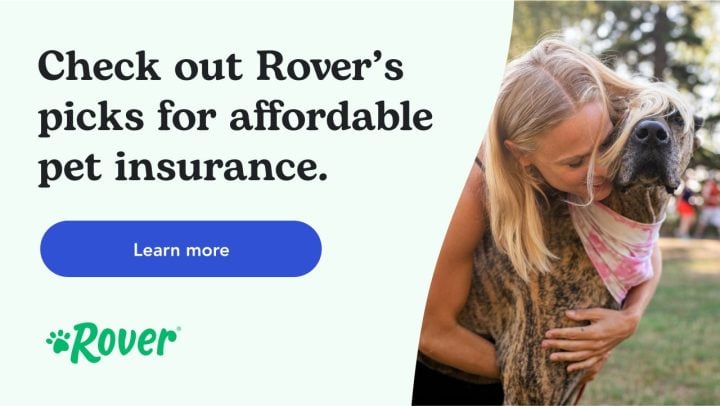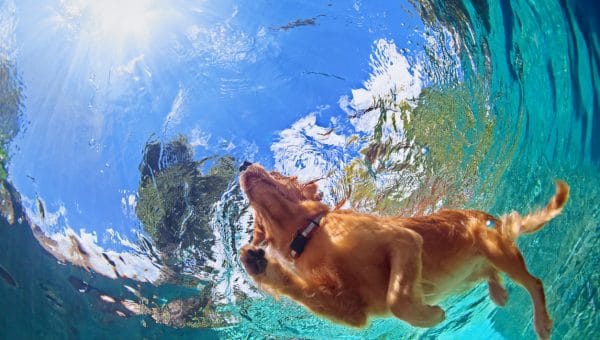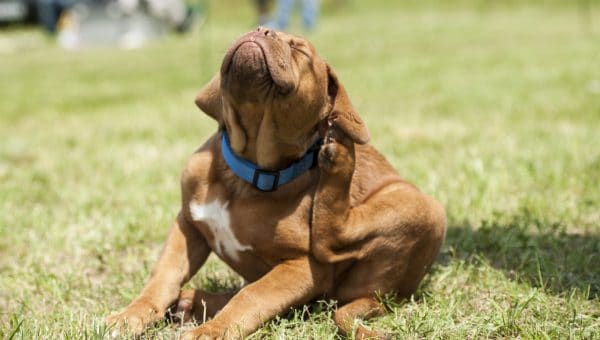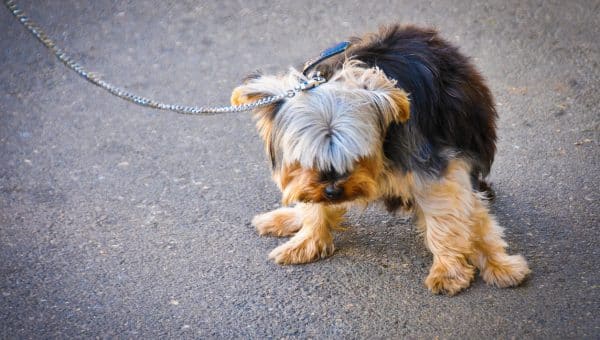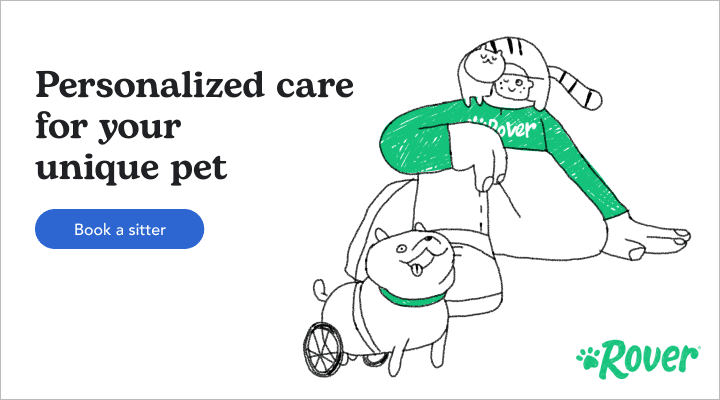- Not a substitute for professional veterinary help.
Dogs can experience eating disorders. Just as with human beings, the occasional lack of enthusiasm to eat can be normal, but a consistent pattern of not eating or a chronic loss of appetite can be a concern.
In addition to refusal of food, other common signs of canine anorexia include lethargy, vomiting, diarrhea, weight loss, or physical signs of difficulty eating or swallowing.
We consulted Dr. Rebecca Greenstein, Veterinary Medical Advisor for Rover and Chief Veterinarian at Kleinburg Veterinary Hospital about the causes of dog anorexia, possible treatments, and other common eating disorders your pet could suffer from.
If you’re worried about your dog’s eating habits, be sure to consult with a vet or veterinary nutritionist.
Can Dogs Develop Anorexia?
Unlike human anorexia, dog anorexia refers only to food aversion and not the body perception issues which drive the human condition.
There are two types of anorexia in dogs:
- Psuedo-anorexia: In this type of anorexia, dogs do have an appetite but are unable to eat due to physical reasons, such as problems with the teeth or throat.
- True anorexia: With this type of anorexia, dogs do not eat due to lack of interest in their food.
In addition to a lack of consistent food intake, Dr. Greenstein says other signs that may indicate anorexia can include weight loss, digestive issues, such as diarrhea or vomiting, and lethargy.
What Causes Anorexia In Dogs?
Anorexia can have both physical and emotional causes in dogs. We’ll take a look at some common reasons why a dog may have anorexia below.
Physical causes of anorexia in dogs
- Teeth problems: Unsurprisingly, dental issues, such as gum or endodontic disease, may make chewing food particularly painful and deter a dog from eating.
- Mouth disorders: A salivary disorder, or issue in the mouth, such as warts or an injury, can also make it challenging for a dog to eat or swallow food.
- Abscesses or tumors: An existing abscess or tumor may be interfering with your dog’s ability to eat.
- Foreign blockages in the throat: If your dog has swallowed something inappropriate, it may be preventing them from getting food down.
- Gastrointestinal diseases: Your dog’s lack of appetite may be due to a problem that’s causing them discomfort in their gastrointestinal system, which makes eating undesirable.
- Toxicity: Ingesting something poisonous will cause loss of appetite. If you suspect your dog has eaten something toxic, get to a vet or call Pet Poison Helpline immediately!
- Infection: Depending on the nature of it, it’s possible that dogs who have an infection may lose interest in eating.
- Medication side effects: Some medications may cause a lack of appetite. Be sure to discuss medications your dog is taking with your veterinarian.
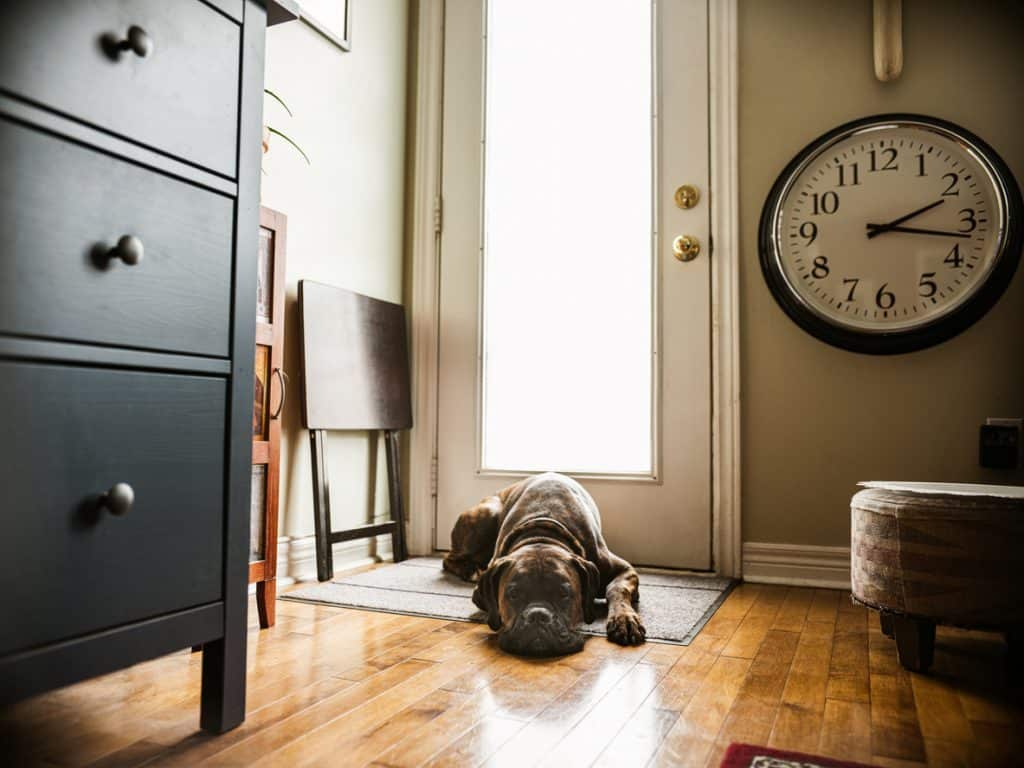
Image credit: FOTOGRAFIA INC. | iStock
Emotional causes of anorexia in dogs
- Stress: Just like us, stress can affect appetite, causing a lack of interest in food. Several things may cause a dog’s stress, according to Dr. Greenstein, from disruption of routines to grieving the loss of another person or pet in the home.
- Separation anxiety: Lack of appetite can be a result of anxiety, and even separation anxiety. In addition to behaviors, such as trying to escape or pacing, a dog with separation anxiety may not be able to eat when alone.
- PTSD: Related to stress and anxiety, doggos who’ve experienced a past trauma may show a decrease in favorite activities, and that could apply to eating as well.
- Chronic pain: It’s hard to eat if you don’t feel well! Chronic pain may be responsible for your dog’s disinterest in their food.
- Unpalatable food: Not to point at you pet parents, but maybe your dog doesn’t like the food you’re giving them. They may not like the flavor, or something may be off with the food itself. It could also be that your dog requires a more specialized diet. Dr. Greenstein also points out that if you’re overfeeding treats, dogs may lose interest in their regular kibble.
What Other Eating Disorders Can Dogs Have?
Anorexia is just one type of eating disorder, but not all eating disorders in dogs are about a lack of food intake. Let’s take a look at some other common eating disorders in dogs.
Overeating
Just like it sounds, overeating is when your dog eats too much. “Pet parents are a little bit guilty of enabling overeating by overfeeding—it’s sort of two sides of the same coin,” says Dr. Greenstein. She also says that the drive to overeat can be seen in certain dogs, which links to their ancestry in the wild—not knowing when or where their next meal is coming. But dogs who overeat risk obesity, digestive problems, and even choking.
Pet parents can help curb this behavior by being mindful of meal portions, number of treats given, etc. and reduce opportunities for overeating.
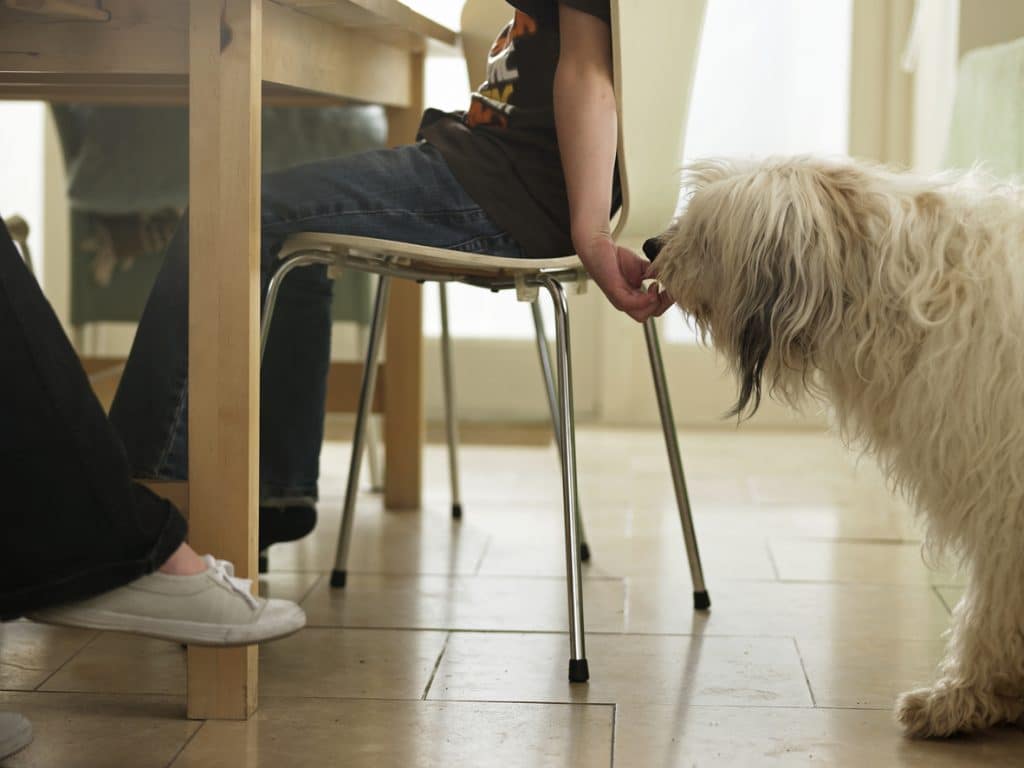
Image credit: John Howard | iStock
Coprophagia/eating feces
Although it’s high on the gross out meter, Dr. Greenstein says that some studies have found a quarter or more of dogs eat feces—a.k.a coprophagia. It’s especially common in puppies, but there could be many reasons for this behavior. Dr. Greenstein says it’s common for mother dogs to lick their pup’s bottoms to stimulate bowel movements. It’s also theorized that it may have to do with a lack of nutrition.
If it’s consistent, take your dog to the vet and bring a stool sample, as eating feces is an easy way to ingest parasites.
Scoffing/bolting food
Some dogs will eat like their lives depend on it, scarfing down food as fast as possible. Dr. Greenstein says this can be a common behavior in puppies who have had to compete with their litter for food. Rescue dogs with abuse in their backgrounds, or dogs that spent time in shelters, may also exhibit this tendency, as food may have been scarce or under threat.
Unfortunately, this can be detrimental, as it can cause bloat or gastric dilatation-volvulus—which can be fatal. Dr. Greenstein recommends a calm environment around mealtime, as well as smaller, more frequent meals, and trying a slow feeder.
Pica
Pica is when a dog eats objects that don’t have any food or nutritional value, such as eating plastic or rocks. “It’s extremely common to a lot of dogs when they’re younger, out of curiosity. You can imagine, puppies can pick everything up in their mouths and try to swallow it,” says Dr. Greenstein.
However, in older dogs, she says it may be a behavioral issue, such as attention-seeking, acting out frustration, and if your dog is on a medication that increases appetite, they may try to eat objects of no value as well. This behavior can lead to choking and blockages, and may require a trainer or behaviorist to address.
Treatments For Anorexia In Dogs
“Effective treatment really does have to be targeted directly to the underlying cause,” says Dr. Greenstein. For example, addressing a lack of interest in eating due to separation anxiety is a very different process from treating oral diseases. So the first step is to assess if there are any physical or emotional reasons for the eating disorder with the help of your veterinarian.
Depending on the cause, your vet may recommend a behaviorist. If your dog’s eating disorder stems from a lack of activity or stimulation, hiring a dog walker can help, too. In serious medical cases, a special high-calorie diet or an appetite stimulant may be prescribed. Feeding tubes or feeding by syringe are other possibilities.
Takeaway
It’s important to take your dog to the vet as soon as possible if you notice a loss of appetite or are worried about your dog’s eating habits.
Dogs nutritional needs can be very specific, so it’s crucial they receive a diet that’s right for them in order to maintain a healthy appetite. Here at Rover, we have an extensive library of articles on dog diets, from grain-free to high protein, fresh food, and more. Be sure to consult your vet or vet nutritionist to help find the right food for your dog and address underlying eating issues and treatments.
